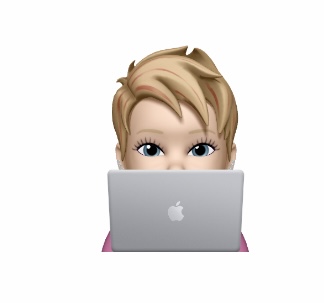
Most (all) of my posts so far have been about e-portfolios. So when the question came up about what does the research say about using e-portfolios in the classroom, you know I was ready. Research? I have that. The issue is more that there are so many aspects to e-portfolios, what research are we talking about? For the sake of this post, I’m going to look at the following: e-portfolios as a teacher tool and using competency or proficiency-based assessment practices through the use of e-portfolios.

As a teacher tool, e-portfolios, and in particular SpacesEdu, can be everything you never knew you always wanted. They provide teachers with the following:
- Access to visual or digital copies of student work easily.
- Assess competencies by tagging them right from the curriculum.
- The ability to see overall student proficiency at a glance for activities or by competency strand.
- A way to engage students by allowing the alternative methods to demonstrate their proficiency.
- Report card data and comments done in real time so there’s never anything unknown to teachers, students or parents.
- Choice as to how much access you give families. If you’re feeling confident, allow them full access. If you want a more targeted approach, choose what you let them see.
- Invite colleagues to collaborate on student assessment.
Of course, there’s more. The advantages of e-portfolios are well documented. “Accessing school database by teachers, students, and parents from mobile devices promotes data-driven educational interactions based on real-time information.” (Blau & Hameiri, 2017) We’ve known for years that having parents and students involved in the assessment of student learning is sound pedagogy. Additionally, the very nature of having student’s create a portfolio allows for differentiation. “They provide multimedia display and assessment possibilities for school and work contexts allowing the use of a variety of tools to demonstrate and develop understanding – especially advantageous for at-risk children whose competencies may be better reflected through these authentic tasks (Barrett, 2007).” (Meyer et al., 2010)
In terms of using e-portfolios to engage in competency-based assessment practices, it makes more sense to find the research from other colleagues than to look at the research on competency-based learning itself. I quickly discovered that while the new BC curriculum bring in facets of competency-based learning and instruction, it does not subscribe to the concept entirely. “The definition of CBE in K-12 includes seven key elements that are relevant to its understanding and implementation in daily practice: student empowerment, assessment as a meaningful experience, student support, evidence of mastery, different pathways and varied pacing, equity and common expectations for learning.” (Maina et al., 2023). British Columbia’s new curriculum promotes student empowerment, assessment as a meaningful experience, and student support fully and pieces of the other two criteria as can be worked into a classroom. “The renewed B.C. curriculum is competency-driven. This emphasis on curricular competencies – the skills, strategies, and processes that students develop within each area of learning – is a new feature. Curriculum, instruction, and assessment are refocused on “doing.” (Ministry of Ed, BC, 2023)
Using SpacesEdu as a portfolio and assessment system has enabled me to tag the specific learning outcomes (competencies) that my students are working on with each activity I post for them. Each competency is individually assessed on the provincial proficiency scale for each activity. Over time, it’s easy to see a student’s growth within a competency and make decisions about interventions and progress moving forward.
While there are the theories and pedagogies surrounding the concept of competency-based education, there are also meaningful conversations happening among educators about the concept of CBE and practical implementation strategies.
Demystifying Standards-Based Grading: Debunking Common Misconceptions | SpacesEDU
The Role of Digital Portfolios in Standards-Based Grading | SpacesEDU
Essentially, you can buy into the parts of competency-based education that fit your own personal pedagogies without having to subscribe to the entire theory. You’re interested in differentiating activities for learners in your classroom? E-portfolios may offer the solution. You want students to show their learning in more ways than pen and paper? Try the video and audio features of an e-portfolio. You want students to demonstrate those tough to assess big ideas like, “literacy as a source of joy”? Videos in an e-portfolio go a long way! You want to see student progress over time? Don’t rely on student binders, you can see growth in an e-portfolio with ease because they support students who are still developing their executive functioning skills.
“Finally, e-portfolios offer a dynamic method for teachers to examine a student’s progress over the course of a program and by doing so, gain a greater understanding of that student’s growth, goals, needs, achievements, and talents (Abrami et al. 2008; Englund 2009; Lorenzo and Ittelson 2005; Meyer et al. 2010).” (Karlin et al., 2016)
Bibliography
Blau, I., & Hameiri, M. (2017). Ubiquitous mobile educational data management by teachers, students and parents: Does technology change school-family communication and parental involvement? Education and Information Technologies, 22(3), 1231–1247. https://doi.org/10.1007/s10639-016-9487-8
Karlin, M., Ozogul, G., Miles, S., & Heide, S. (2016). The Practical Application of e-Portfolios in K-12 Classrooms: An Exploration of Three Web 2.0 Tools by Three Teachers. TechTrends, 60(4), 374–380. https://doi.org/10.1007/s11528-016-0071-2
Meyer, E., Abrami, P. C., Wade, C. A., Aslan, O., & Deault, L. (2010). Improving literacy and metacognition with electronic portfolios: Teaching and learning with ePEARL. Computers & Education, 55(1), 84–91. https://doi.org/10.1016/j.compedu.2009.12.005
Ministry of Ed, BC. (2023). A Framework for Classroom Assessment. https://curriculum.gov.bc.ca/sites/curriculum.gov.bc.ca/files/pdf/assessment/a-framework-for-classroom-assessment.pdf
Leave a Reply